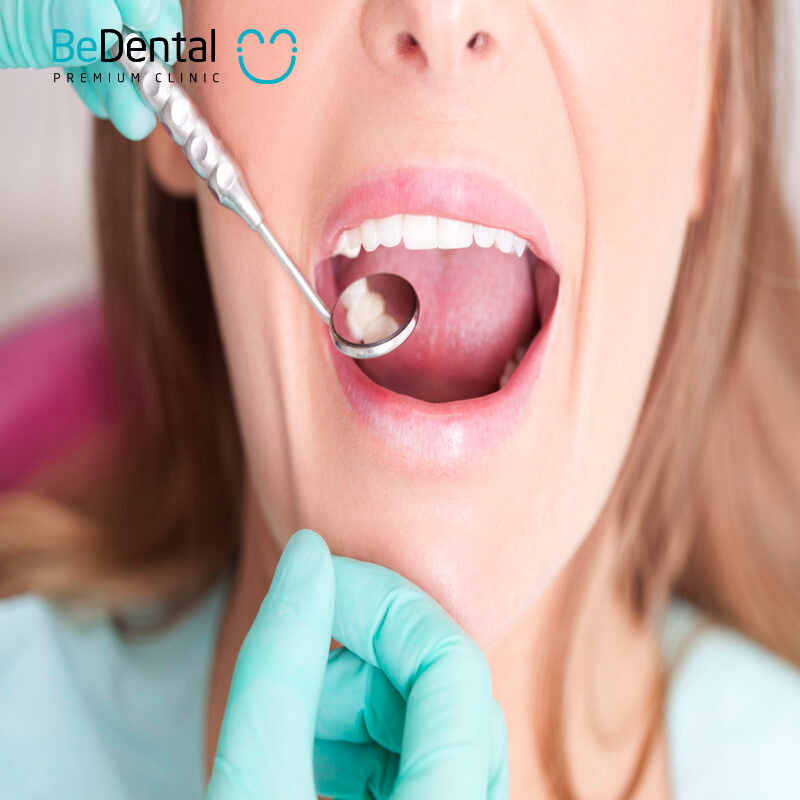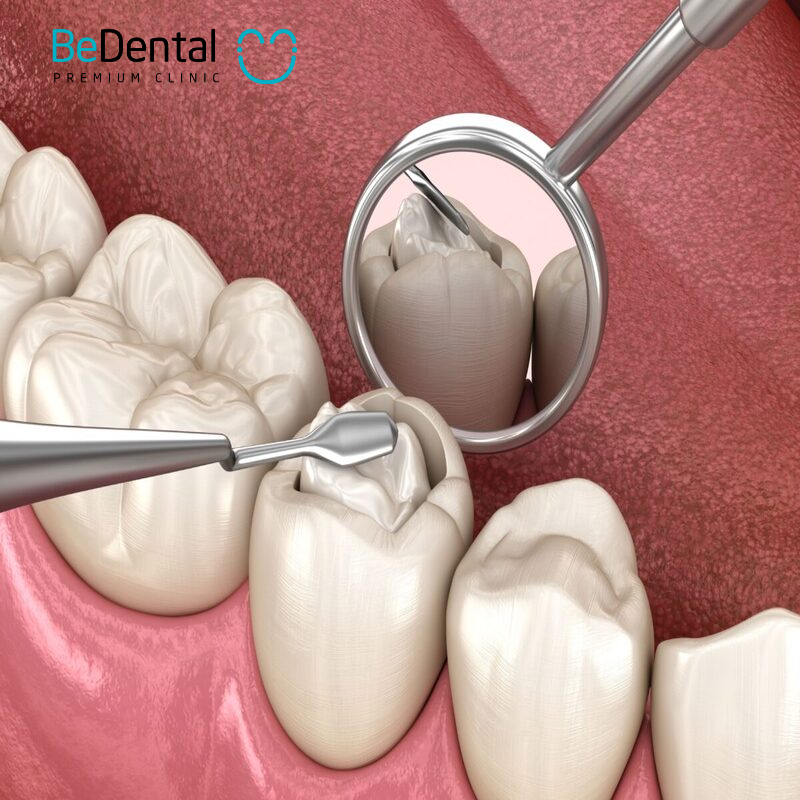Proper dental care after filling not only protects the filling itself but also maintains overall oral health. According to statistics from the American Dental Association (ADA), 60% of dental fillings can last between 5 to 15 years, depending on how well patients care for their teeth and their lifestyle habits. However, about 30% of fillings may fail early due to non-compliance with post-treatment dental care guidelines.
To ensure the longevity of the filling, patients should pay attention to their diet, practice proper oral hygiene, and attend regular check-ups. These factors not only help maintain the filling for a longer period but also prevent complications such as cracking, peeling, or recurring cavities. How to care for your teeth after a filling. Proper dental care will help keep your filling stable and ensure comprehensive oral health.
The Importance of Post-Filling Care
Taking care of your teeth after a filling is crucial to ensure that the filling retains its durability and function while preventing future oral health issues. Here are several reasons why post-filling care is essential:
- Protecting the Filling: After a filling, proper care prevents the filling from damage, peeling, or breaking. The filling needs time to stabilize, so avoiding hard foods for the first 24 hours can help protect it better.
- Preventing Cavities: Even after a tooth is filled, bacteria can still invade the spaces between the teeth or beneath the filling if proper care isn’t taken. Brushing properly and using dental floss can clean around the filling, preventing cavities from recurring.

- Reducing Tooth Sensitivity: After filling, teeth may become sensitive for a few days, especially to hot or cold temperatures. Using toothpaste designed for sensitive teeth and avoiding extremely hot or cold foods can help minimize discomfort.
- Maintaining Overall Dental Health: Taking care of your teeth after a filling helps maintain the overall health of your teeth and gums, thereby reducing the risk of oral diseases such as gingivitis, pulpitis, or even tooth loss.
- Regular Check-ups: Visiting the dentist regularly after a filling is essential to check the condition of the filling and to detect early any potential issues such as marginal leakage, infections, or new cavities.
In general, post-filling dental care not only protects the filling but also maintains long-term oral health.
Proper Oral Hygiene- How to care for your teeth after a filling.
How to care for your teeth after a filling, it’s important to practice good oral hygiene to protect the tooth and ensure the filling lasts.
Brushing Instructions After Filling
Use a Soft-Bristle Toothbrush: Choose a toothbrush with soft bristles (Choosing the best toothbrush) to avoid damaging the filling or the gums. A soft-bristle brush cleans the teeth gently without causing abrasion or excessive pressure on the filled tooth. Brush gently using circular motions, ensuring you don’t miss any areas around the filling.
Choose the Right Toothpaste: Use fluoride toothpaste to protect your teeth from cavities and strengthen enamel after a filling. If you experience sensitivity after the filling, opt for toothpaste specifically formulated for sensitive teeth to alleviate discomfort.
Proper Flossing Technique- How to care for your teeth after a filling,
Here’s how to floss correctly:
- Cut about 45 cm of dental floss and wrap it around the middle fingers of both hands, leaving about 5-7 cm in between.
- Gently insert the floss between the teeth, moving it up and down vertically, avoiding pulling it hard against the gums. Ensure you clean both sides of each gap.
- After each gap, move to a clean section of floss and continue with the other spaces.

Benefits of Flossing
Removing Plaque and Food Debris: Flossing helps remove food particles and plaque from areas that a toothbrush can’t reach, such as between teeth and under the gumline.
Preventing Cavities and Gum Disease: By effectively cleaning the spaces between teeth, flossing helps prevent the accumulation of bacteria, thereby reducing the risk of cavities and gum disease.
Protecting the Filling: Flossing thoroughly around the filling minimizes the risk of recurrent cavities or infections.
Dietary Considerations After Filling
How to care for your teeth after a filling (from wikihow), it’s also important to pay attention to what foods to eat and what to avoid. Opt for soft foods and steer clear of hard, sticky, and brightly colored foods.
Foods to Avoid After Filling
- Hard and Sticky Foods: Avoid hard foods like ice cubes, hard candy, nuts, or anything requiring strong chewing. These foods can put pressure on the filling, leading to damage or dislodgement.
- Sticky Foods: Avoid sticky items like chewing gum, caramel, or gummy candies, which can adhere to the filling, making it difficult to clean and potentially loosening it.
- Strongly Colored Foods (Coffee, Tea, Soft Drinks): Coffee, tea, carbonated beverages, and other deeply colored foods can stain the filling (especially composite fillings). Additionally, these acidic drinks can weaken enamel and affect the filling’s durability.
Recommended Foods
Soft and Easy-to-Chew Foods: After getting a filling, eat soft foods like soup, porridge, mashed potatoes, soft bread, cooked vegetables, and soft fruits like bananas or mangoes. These foods are easy to chew and won’t put pressure on the filling.
Dairy Products: Yogurt, eggs, and cheese are also good options for providing nutrition without harming the filled tooth.
Water and Herbal Tea: Drinking enough water helps rinse the mouth and prevents bacterial growth, especially after snacks. Caffeine-free herbal teas, particularly soothing varieties like peppermint or chamomile tea, are good choices after a filling, as they help maintain moisture without harming the filling or enamel.
A suitable diet after filling helps protect the filling while maintaining oral health, preventing complications, and ensuring treatment effectiveness.
Regular Check-Ups
After getting a filling, it’s essential to schedule regular check-ups to monitor the stability of the filling. Regular visits also help detect issues like cavities and other problems early, enabling preventive solutions for long-term complications.
Importance of Regular Check-Ups
- Ensuring Filling Stability: Periodic check-ups allow the dentist to monitor the condition of the filling, ensuring it remains secure and hasn’t loosened or worn down. Early detection of any issues allows for timely treatment, preventing more serious problems.
- Detecting Cavities and Other Issues: A filling doesn’t completely prevent cavities, so regular check-ups help identify areas at risk for decay or other conditions such as gum disease or periodontitis. This protects your overall oral health.
- Evaluating Oral Hygiene: The dentist will thoroughly check how you’ve been caring for your teeth after the filling, ensuring you’re using the right brushing and flossing techniques. If necessary, they will provide guidance to adjust your hygiene habits to protect the filling and prevent emerging issues.
- Preventing Long-Term Complications: Some fillings may crack or leak over time. Regular check-ups help detect and address these complications before they seriously affect your oral health.
Follow-Up Schedule After Filling
First Follow-Up (1-2 Weeks After Filling): This is the time for the dentist to check if the filling has stabilized and whether any issues have arisen, such as sensitivity, discomfort, or bite problems. If any unusual symptoms occur, the dentist will make adjustments immediately.
Regular Check-Ups Every 6 Months: After the filling has stabilized, visit the dentist at least every six months for a comprehensive dental evaluation. During these visits, the dentist will perform a thorough cleaning and reassess the condition of the filling.
Immediate Check-Up for Unusual Symptoms: If you experience pain, sensitivity, or notice signs of cracking or chipping in the filling, consult your dentist promptly for timely intervention.
Signs to Watch For
If you experience urgent signs like pain or if your filling comes loose after treatment, please follow the instructions below.
Symptoms to Report to Your Dentist
- Pain or Discomfort: If you feel pain or discomfort after getting a filling, especially when eating or biting down, it may indicate that the filling doesn’t fit properly or there are bite issues. Ongoing pain could also be a sign of infection or recurring decay. Notably, if the pain worsens when exposed to hot or cold foods, it could be a sign of sensitivity after the filling.
- Filling Material Loosening or Cracking: If you notice your filling coming loose, cracking, or breaking, contact your dentist right away. A loose or cracked filling can make the protected area of your tooth sensitive to bacteria and more vulnerable to decay. These signs often appear when the filling has worn down over time or has been subjected to excessive pressure from chewing.

How to Handle an Emergency
In Case of Severe Pain: If you’re experiencing severe pain or heightened sensitivity, avoid eating very hot or cold foods to prevent further irritation. Over-the-counter pain relievers like paracetamol or ibuprofen can help alleviate discomfort until you see your dentist. Rinsing with warm salt water may also soothe pain and temporarily reduce inflammation.
If the Filling Comes Loose or Cracks: If your filling comes loose or cracks, try to keep any pieces if you can, and contact your dentist immediately to schedule an examination. In the meantime, avoid chewing on the affected side and stick to soft foods. You can apply a small amount of dental wax over the cracked area for temporary protection against external pressure, especially for composite fillings.
Recognizing and addressing unusual signs promptly after a filling will help protect your tooth and the filling, preventing more serious complications.
BeDental is a prominent brand for dental fillings in Vietnam
BeDental is a prominent brand for dental fillings in Vietnam. The clinic is known for providing high-quality dental filling services that effectively restore damaged teeth while ensuring patient comfort. With a team of skilled dental professionals, BeDental uses advanced materials and techniques to achieve durable and aesthetically pleasing results. The clinic prioritizes patient care and satisfaction, making it a trusted choice for dental filling services across the country.
For those seeking further consultation regarding dental examination services, please visit BeDental’s locations in Hanoi or Ho Chi Minh City. You can also reach us at our hotline: (+84) 934.61.9090 / (+84) 899.555.636 or through our Facebook page, BeDental, for prompt and accurate assistance.




